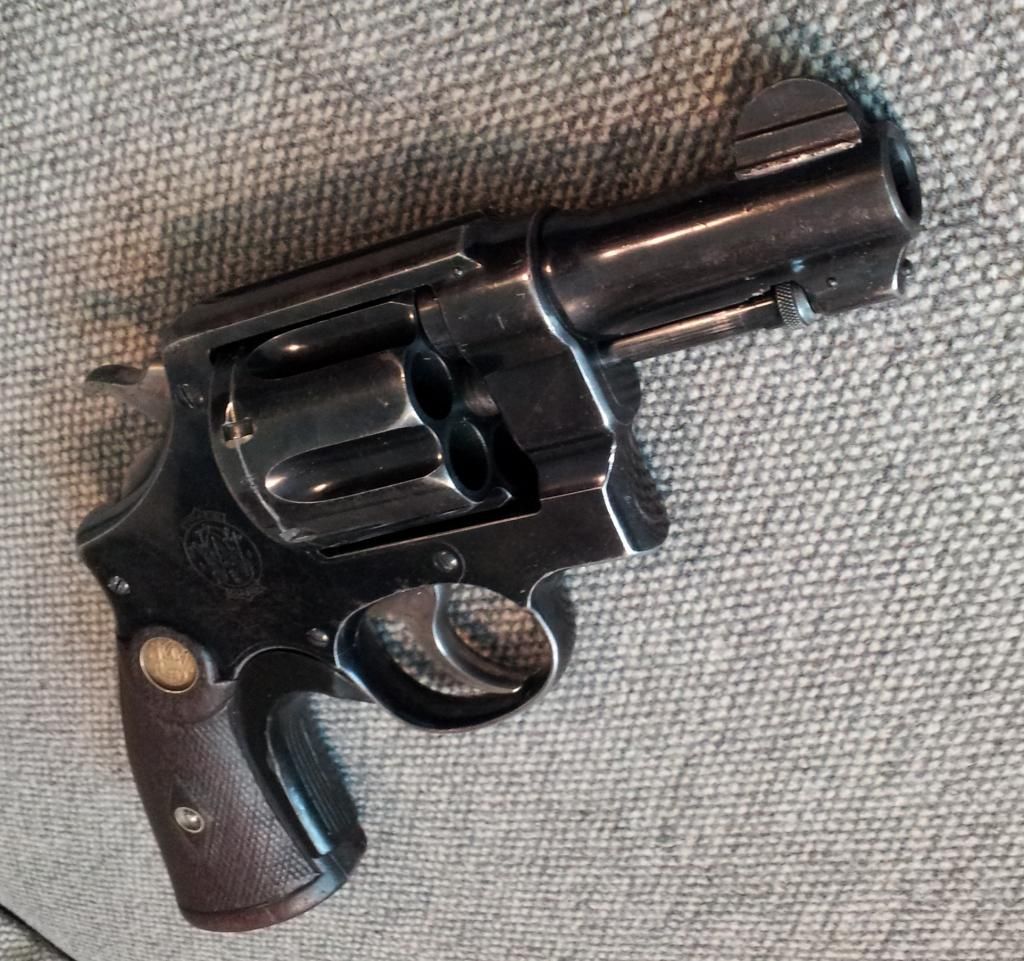A local shop has an older S&W that intrigues me and I was hoping perhaps someone might be able to help me better identify it and perhaps give an estimate of value.
What the gun appears to be is a S&W Second Model Hand Ejector in .45 Long Colt. The barrel has been shortened to approximately 3 1/2 inches and the gun's nickel finish appears to be a fairly good refinishing job (some of the markings are a bit faint). I don't believe that the gun has been a U.S. or British military specimen because the butt does not appear to have ever been drilled for a lanyard and I did not see any of the proof marks that the Brits usually stamped all over their guns. The serial number, IIRC, was in the 7,000 range.
I say that the gun appears to be chambered for .45 Long Colt because there are no caliber markings that I could see but .45 LC cartridges fit well in the chambers and the cylinder will close and rotate fine without the cartridges rubbing against the recoil shield. I also tried .44 Special and .44-40 ammunition but both cartridges seemed to fit very loosely. The space between the rear face of the cylinder and recoil shield didn't appear large enough to accommodate .45 ACP in moonclips or .45 AR ammo so I did not try that. The only other reasonably common cartridge that I could think of for a revolver of this sort to be chambered in is .455 Webley, but I did not have access to cartridges of that type to try and I'd think that if the gun were so-chambered, .45 LC cartridges wouldn't fit due to the much shorter length and thinner rim of the .455 Webley cartridge.
Now, I know that this gun has very little collector value due to being so heavily modified, my main interest in it lies in the neat Indiana Jones vibe that it gives. My main concern is that it's some sort of cobbled together Franken-gun composed of parts from different specimens. Given this, what would you all estimate such a gun would be worth as a shooter and conversation piece. My gut tells me that $250-300 max would be reasonable considering the risk of getting a Franken-gun, but I really don't know.
What the gun appears to be is a S&W Second Model Hand Ejector in .45 Long Colt. The barrel has been shortened to approximately 3 1/2 inches and the gun's nickel finish appears to be a fairly good refinishing job (some of the markings are a bit faint). I don't believe that the gun has been a U.S. or British military specimen because the butt does not appear to have ever been drilled for a lanyard and I did not see any of the proof marks that the Brits usually stamped all over their guns. The serial number, IIRC, was in the 7,000 range.
I say that the gun appears to be chambered for .45 Long Colt because there are no caliber markings that I could see but .45 LC cartridges fit well in the chambers and the cylinder will close and rotate fine without the cartridges rubbing against the recoil shield. I also tried .44 Special and .44-40 ammunition but both cartridges seemed to fit very loosely. The space between the rear face of the cylinder and recoil shield didn't appear large enough to accommodate .45 ACP in moonclips or .45 AR ammo so I did not try that. The only other reasonably common cartridge that I could think of for a revolver of this sort to be chambered in is .455 Webley, but I did not have access to cartridges of that type to try and I'd think that if the gun were so-chambered, .45 LC cartridges wouldn't fit due to the much shorter length and thinner rim of the .455 Webley cartridge.
Now, I know that this gun has very little collector value due to being so heavily modified, my main interest in it lies in the neat Indiana Jones vibe that it gives. My main concern is that it's some sort of cobbled together Franken-gun composed of parts from different specimens. Given this, what would you all estimate such a gun would be worth as a shooter and conversation piece. My gut tells me that $250-300 max would be reasonable considering the risk of getting a Franken-gun, but I really don't know.







